33. Mind the Gap: The Role of Mass Transfer in Shaped Nanoporous Adsorbents for Carbon Dioxide Capture
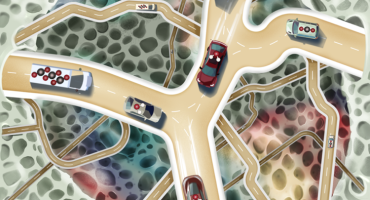
Abstract : Adsorptive separations by nanoporous materials are major industrial processes. The industrial importance of solid adsorbents is only expected to grow due to the increased focus on carbon dioxide capture technology and energy-efficient separations. To evaluate the performance of an adsorbent and design a separation process, the adsorption thermodynamics and kinetics must be known. However, etc...
Download article in pdf
URL of the article
32. Engineering of an Isoreticular Series of CALF-20 Metal−Organic Frameworks for CO2 Capture
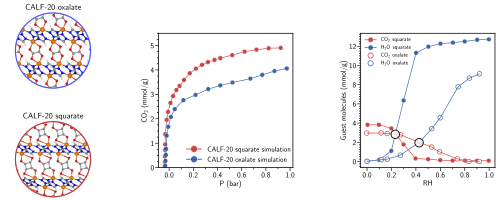
Abstract : A series of linker-substituted ultramicroporous CALF-20 metal−organic frameworks (MOFs) were built in silico, and their CO2 capture performances over N 2 in flue gas conditions were systematically computationally explored. Among the various linker substitutions explored, squarate-linker-incorporated CALF-20 (SquCALF-20) was demonstrated to show a larger CO 2 uptake at 0.15 bar (3.6 mmol/g) and higher etc...
Download article in pdf
URL of the article
31. Abnormal CO2 and H2O Diffusion in CALF-20(Zn) Metal-Organic Framework: Fundamental Understanding of CO2 Capture
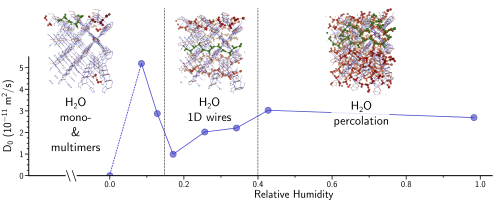 Abstract : Carbon mitigation is one challenging issue that the world is facing. To tackle
Abstract : Carbon mitigation is one challenging issue that the world is facing. To tackle
deleterious impacts of CO 2 , processes emerged, including chemisorption from amine
based solvents, and more recently physisorption in nanoporous solids. Physisorption
in Metal-Organic Frameworks (MOFs) is currently attracting a considerable attention,
however the selection of the optimum sorbent is still challenging. etc...
Download article in pdf
Download SI in pdf
URL of the article
30. Trigger Smart Data Saving Applied to CO2 Capture in Metal-Organic Frameworks
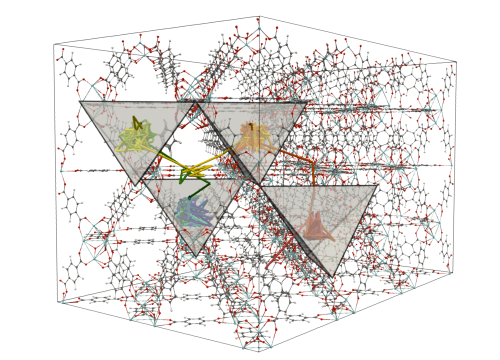 Abstract : Facing the need for carbon emission reduction, processes such as
Abstract : Facing the need for carbon emission reduction, processes such as
CO2 capture in nanoporous Metal-Organic Frameworks (MOFs)
have emerged. However, such processes still need to be improved,
by understanding the dynamic properties of CO2 molecules when
confined in MOF nanopores. To do so, etc...
Download article in pdf
URL of the article
29. Modelling Carbon Capture on Metal-Organic Frameworks with Quantum Computing
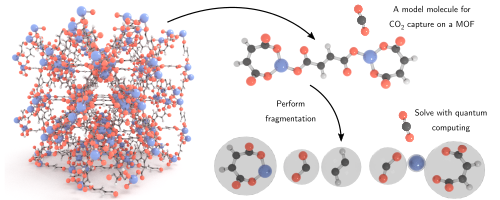 Abstract : Despite the recent progress in quantum computational algorithms for chemistry, there is a dearth of quantum computational simulations focused on material science applications, especially for the energy sector, etc...
Abstract : Despite the recent progress in quantum computational algorithms for chemistry, there is a dearth of quantum computational simulations focused on material science applications, especially for the energy sector, etc...
Download article in pdf
Download SI in pdf
URL of the article
28. Adsorption for CO2 capture: experimental focus on the thermodynamic and kinetic role of water
 Abstract : A global energy transition based on low-carbon energy is urgently needed to limit greenhouse gas emissions and the
Abstract : A global energy transition based on low-carbon energy is urgently needed to limit greenhouse gas emissions and the
resulting global warming in the next decades. To tackle greenhouse gas effects, particularly CO2 contributing to 70%
of the overall emissions, drastic changes must be made...
Download article in pdf
URL of the article
27. Modeling inundation flooding in urban environments using density functional theory
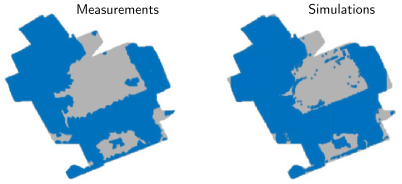 Abstract : Evaluating the risk of inundation flooding and its deleterious effects in urban environments is
Abstract : Evaluating the risk of inundation flooding and its deleterious effects in urban environments is
key, considering that such natural disasters are poorly predictable, costly, and are expected to increase with global warming, etc...
Download article in pdf
URL of the article
26. A Step in Carbon Capture from Wet Gases: Understanding Water Effect on CO2 Adsorption and Diffusion in UiO-66
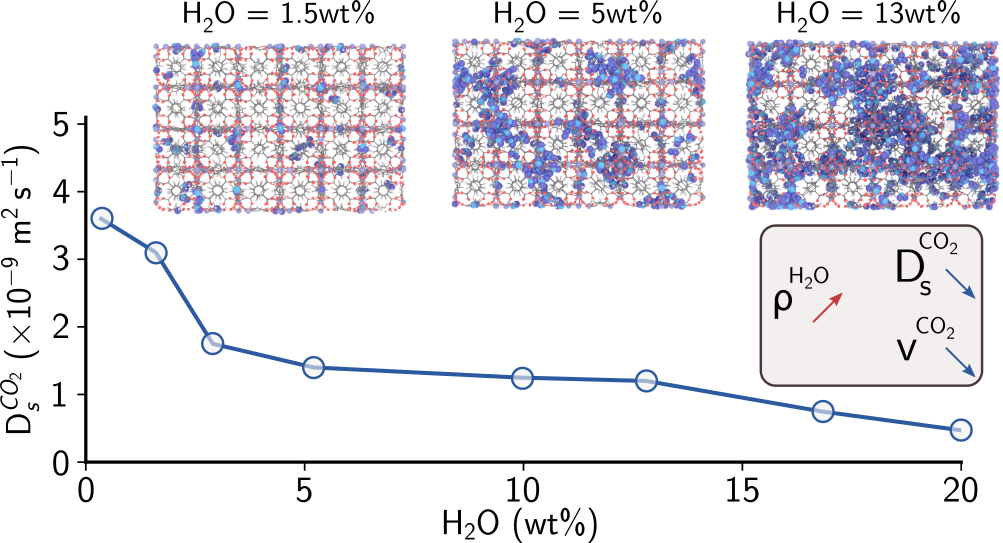 Abstract : Understanding the role played by moisture in CO2 sorption is key for designing the next generation of solid sorbents such as metal-organic frameworks, which can be used for carbon capture and conversion as well as for molecular sieving, energy storage, etc...
Abstract : Understanding the role played by moisture in CO2 sorption is key for designing the next generation of solid sorbents such as metal-organic frameworks, which can be used for carbon capture and conversion as well as for molecular sieving, energy storage, etc...
Download article in pdf
Download SI in pdf
URL of the article
25. Granular-like behavior of molecular flow in constricted nanopores.
24. Collapse phase diagram of carbon nanotubes with arbitrary number of walls. Collapse modes and macroscopic analog.
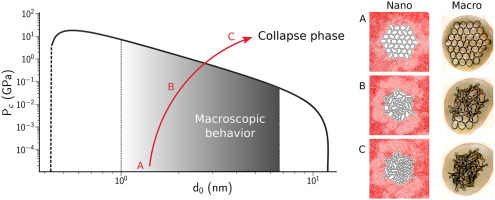 Abstract : Carbon nanotubes tend to collapse when their diameters exceed a certain threshold, or when a sufficiently large external pressure is applied on their walls. The radial stability of tubes has been studied in each of these cases, ...
Abstract : Carbon nanotubes tend to collapse when their diameters exceed a certain threshold, or when a sufficiently large external pressure is applied on their walls. The radial stability of tubes has been studied in each of these cases, ...
Download draft in pdf
URL of the article








